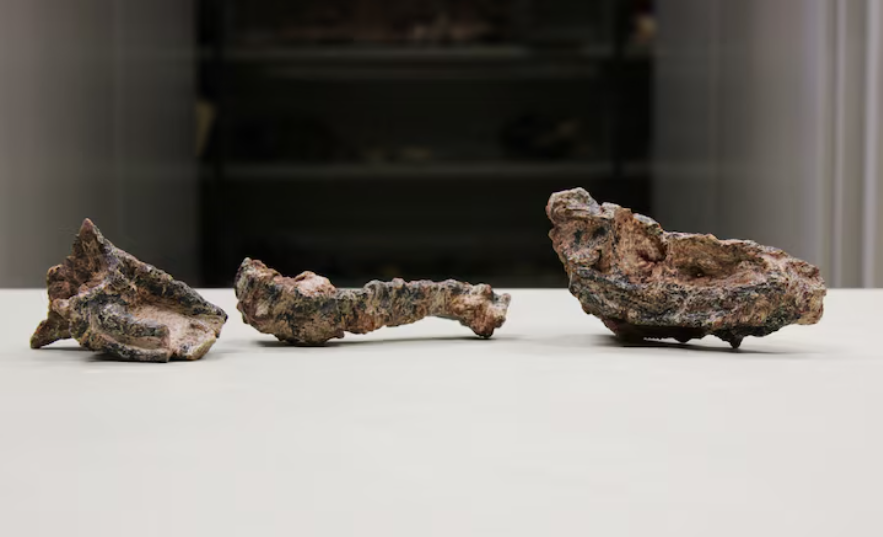
©Rodrigo Temp Muller/Handout via REUTERS/File Photo
Pre-reading questions:
I will read each question. Then, please answer them.
講師がそれぞれの質問を読むので答えましょう。
- Have you ever seen a crocodile in person?
- Are you interested in studying prehistoric life?
Vocabulary:
I will read the words, meanings, and sample sentences. Then, repeat after me.
単語、意味、例文を読みます。講師に続いて音読しましょう。
- ago /uh-GOH/
- length /lengkth/
- branch /branch/
- modern /MOD-ern/
- appear /uh-PEER/
[adverb] – back in time from the present
She visited the museum two weeks ago.
[noun] – the measurement of something from end to end or along its longest side
Please measure the length of the table before buying a tablecloth.
[noun] – a division or part of a larger group, especially a family, connected in some way
The Smiths are a prominent branch of the family tree, known for their entrepreneurial spirit.
[adjective] – the current or contemporary species that exist today
The modern smartphone features advanced technology and elegant design.
[verb] – to come into existence or to begin to be present
The stars appear in the sky at night.
Article reading:
Please read the whole article. Then, I will check your pronunciation and intonation.
記事を音読しましょう。講師はあなたの発音とイントネーションを確認します。
A Brazilian scientist recently discovered fossils of Parvosuchus aurelioi, a small reptile resembling a crocodile that lived over 237 million years ago in southern Brazil. These fossils, including a complete skull, 11 vertebrae, the pelvis, and limb bones, were shared by paleontologist Rodrigo Muller from the Federal University of Santa Maria in Rio Grande state after publishing his research in Scientific Reports. Parvosuchus, meaning “small crocodile,” measured about one meter in length and preyed on smaller reptiles. It belonged to the rare Gracilisuchidae family, known previously from Argentina and China, existing just before dinosaurs. Parvosuchus represents an early branch of the Pseudosuchia lineage, which later evolved into modern crocodiles. Living after Earth’s worst mass extinction event 252 million years ago, various reptile groups competed for dominance before dinosaurs became predominant. The Gracilisuchidae family, to which Parvosuchus belonged, disappeared about seven million years before dinosaurs appeared. Muller emphasized that discovering Parvosuchus aurelioi enriches the understanding of ancient biodiversity and provides crucial insights into the evolution of crocodiles and dinosaurs. This finding underscores the importance of continuous paleontological research in unraveling Earth’s intricate history.
True or False:
Read the sentences and identify if they are true or false based on the article.
文章を読んで、記事に基づいて正誤を答えましょう。
- The fossils include a complete skull, 11 vertebrae, the pelvis, and limb bones of Parvosuchus aurelioi.
- Parvosuchus, meaning “small crocodile,” measured about one meter in length.
- The Gracilisuchidae family, to which Parvosuchus belonged, existed alongside dinosaurs and competed directly with them for dominance.
- Parvosuchus measured about two meters in length and primarily preyed on larger mammals.
- Parvosuchus aurelioi lived over 337 million years ago in southern Brazil.
Fill in the blanks:
Choose the correct word from the table then fill in the blanks.
適切な言葉を選んで空欄を埋めましょう。
| ago | length | branch | modern | appear |
- The __________ approach to education emphasizes collaboration and critical thinking.
- The __________ of the rope was just enough to reach the top of the cliff.
- The first signs of spring __________ with the blooming of crocuses.
- The marketing department is a crucial __________ of our company, responsible for promoting our products and services.
- The meeting was held a month __________.